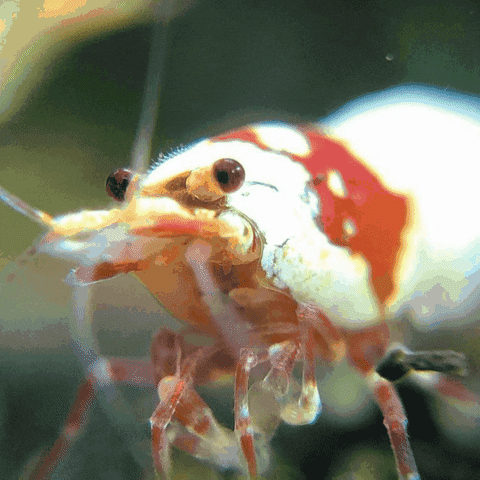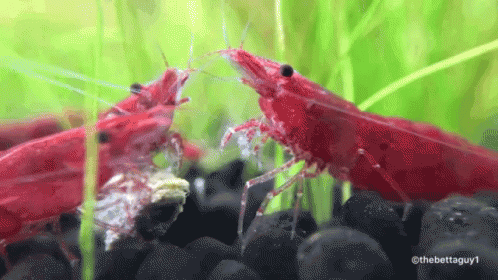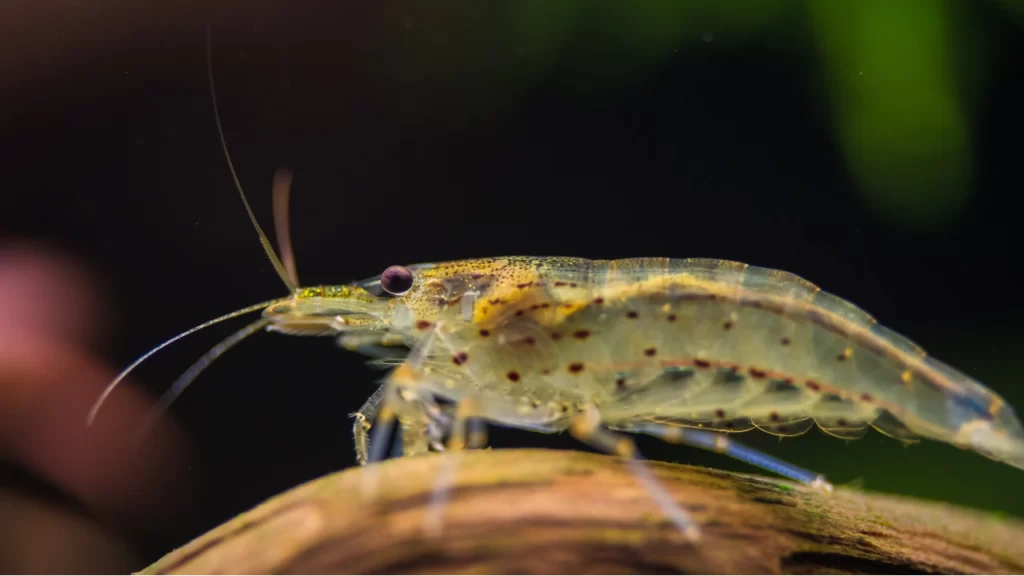“Shrimp” is an aquatic animal belonging to a group of decapod crustaceans called “Caridea,” which is distributed worldwide in different habitats, both freshwater (rivers, lakes, etc.) and marine.
In countries like Peru, it is known as “langostino,” due to its similarities with the same, and although both are crustaceans that are part of the same family, they have different body structures.
Currently, there are about 2,500 species, with specimens as spectacular as the “mantis shrimp,” capable of creating a powerful wave of bubbles that kills or stuns its prey.
Want to know more? Keep reading and discover everything about shrimp… Don’t go away!
What is shrimp?
It is a marine or freshwater aquatic animal that belongs to the “decapod crustaceans,” so-called because it has a shell and ten legs, generally smaller in size than prawns.
It is also known by the name of caridean, prawn, shrimp, or squilla.
What family does shrimp belong to?
Shrimp belongs to the “Crustaceans,” for having a shell or crust, to the Order “Decapoda,” for having ten legs, and to the Suborder “Pleocyemata,” because the fertilized eggs are incubated by the female and remain attached to the pleopods (swimming legs).
In turn, it is classified in the Infraorder “Caridea” (from the Greek Karis, “shrimp”) and consists of approximately 2,500 species distributed in 21 families, among which stand out: Alpheidae, Pandalidae, and Hippolytidae.
What characteristics does shrimp have?
- Cylindrical body, elongated, divided into three regions: cephalothorax, abdomen, and telson.
- The cephalothorax is the union of the head (cephalon) and the thorax, and is covered by a shell, which usually extends into a rostrum with teeth and tiny hairs.
- In the head part, there are several appendages that function as mouthpieces (mandible, maxillae, and maxillipeds), a pair of antennas, and another pair of antennules (smaller antennas).
- The eyes are bulging and well-developed, the eye edge has fine bristles. Species that live in caves tend to be blind.
- The thorax has five pairs of locomotive legs or pereiopods.
- In some species, the first pair of legs usually consists of elongated pieces in the form of pincers (chela).
- The abdomen, also called pleon, has a smooth texture and has five pairs of pleopods or swimming appendages.
- The edges of the second segment of the abdomen are saddle-shaped and overlap the first and third segments.
- The telson is an elongated piece at the end of the abdomen, and together with two structures (uropods) form a tail or fan.

Nervous System
The shrimp possesses a simple nervous system comprised of several clusters of nerve cells, primarily located in the mouthparts, legs, and antennae, which connect to a nerve cord running along the body. It has many sensory units allowing it to detect the presence of objects, smells, tastes, and maintain balance (statocysts).
Circulatory System
It has an open circulatory system, with a muscular heart located in the cephalothorax and a network of blood vessels through which the blood (hemolymph) circulates, bathing each body organ.
Respiratory System
The shrimp breathes through leaf-shaped gills (phyllobranchiae) located on both sides inside the cephalothorax (the part that joins the head and thorax), creating water currents by moving its appendages.
Muscular System
It consists of striated muscles located mostly in the abdomen; each muscle has muscle fibers that allow it to respond to stimuli and contract.
Digestive System
It is composed of the mouth, esophagus, stomach, intestine, and anus. The stomach is divided into two regions: the anterior or cardiac, which has a masticating apparatus, and the posterior or pyloric, where there is a kind of filter that selects particles to be digested.
On each side of the stomach, there is a gland called “hepatopancreas,” which is very important for nutrient absorption.
Reproductive System
Females and males are differentiated; the female has a pair of ovaries, which lead the oocytes outside through the genital opening (gonopore), located on the third pair of locomotor legs (pereiopods).
The male has testicles; the gonopore opens to the outside at the base of the fifth pair of locomotor legs.
Did you know...? Many shrimp species behave as males in their juvenile stage and become females as they age; this is known as protandric hermaphroditism. Click To TweetReproduction of Shrimps
Shrimps reproduce sexually, and fertilization is external.
The larger male tends to search for the female when she is in the process of molting or shedding her cover (exuvia) and follows her until successful mating.
Once accepted, the male surrounds the female’s body and holds her with his legs while bending his abdomen to join the genital openings and transfer his spermatophore (a small sac with sperm) to fertilize the oocytes (gelatinous egg mass).
The fertilized oocytes remain attached to the female until they hatch and give rise to a small floating larva; some species disperse the eggs in freshwater (spawning).
This larva drifts to the sea and undergoes several changes (metamorphosis); then, in its adult phase, it will seek the mouth of a river to head towards its usual areas.
What color are shrimps?
Shrimps can display various colors: violet, pink, orange, red, blue, greenish-grey, light brown… or be semi-transparent or white.

What size is a shrimp?
Shrimps measure between 2 and 35 centimeters. One of the smallest species is the “Caridina dennerli” or Sulawesi flamenco shrimp, which sizes range from 1.5 to 2 centimeters.
How many legs does a shrimp have?
A shrimp has ten locomotor legs called pereiopods; hence it is called a decapod; it also has five pairs of extensions useful for swimming (pleopods).
Where Do Shrimps Live?
Shrimps are found all over the planet and can inhabit saltwater, brackish, and freshwater environments, including coastal rivers, seagrass beds, lake bottoms, mud, mangroves, beach sands, brackish and freshwater lagoons, reefs, and shallow waters.
They are common in the tropical and temperate waters of rocky areas; they can also be found in caves, crevices, and other flowing and stagnant waters.
Did you know? The shrimp's ability to adapt to different habitats has allowed it to associate with corals, mollusks, echinoderms, some vertebrates like the goby fish, and other crustaceans. Click To TweetWhat Do Shrimps Eat?
Shrimps are omnivores, meaning they feed on both animals and plants, and their diet includes detritus, algae, small crustaceans, polychaetes, mollusks, mosquito larvae, and even dead animal remains (carrion).
Some species, such as the big claw river shrimp (Macrobrachium tenellum), may exhibit cannibalistic behaviors.
The pistol shrimp extends its antennae to check if prey is passing by and, upon sensing movement, snaps its claw shut, producing a powerful bubble jet in a fraction of a second that kills or stuns its victim. Click To TweetTypes of Shrimps
Based on their habitat, shrimps are classified into pelagic and benthic carideans.
Pelagic Carideans
These are shrimp species that inhabit marine and freshwater environments (up to 200 meters deep). Notable families include: Alpheidae, Palaemonidae, and Atyidae.
Alpheidae (Snapping Shrimps)
This family includes shrimps that live in tropical and subtropical latitudes, though species in temperate waters have been reported; it comprises about 600 species grouped into 45 genera, among which “Alpheus” stands out, characterized by exhibiting asymmetrical claws.
Examples of Alpheidae shrimps:
Pistol shrimp “Alpheus randalli”, New Zealand shrimp “Alpheus cedrici”…
Did you know? During World War II, American submarines took advantage of the abundant colonies of Alpheidae along the Japanese coasts to move stealthily, masking the noise of their engines. Click To TweetPalaemonidae (Prawn Family)
These are the most numerous shrimps; they have a wide geographical distribution and are represented by many species in marine, estuarine, and freshwater systems, usually among rocks and seagrasses.
The subfamily “Palaemoninae” is distinguished, with 26 genera, the most diverse being “Macrobrachium,” which includes 238 species distributed across the tropical and subtropical belt of Asia, America, Oceania, and the Pacific islands.
Examples of Palaemonidae shrimps:
Pederson’s cleaner shrimp “Ancylomenes pedersoni”, Buchura shrimp “Macrobrachium olfersii”…
Atyidae (Freshwater Shrimps)
Includes shrimps inhabiting all tropical and temperate waters of the world, both surface and underground.
Examples of Atyidae shrimps:
Rancho Grande river shrimp “Atya dressleri”, Hawaiian Red Shrimp “Halocaridina rubra”…
Shrimp | What it is, where it lives, what it eats, and types of shrimps Click To TweetBenthic Carideans
These are shrimps that inhabit the seafloor, reaching depths of up to 5,000 meters; among the notable families are the Pandalidae and Crangonidae.
Pandalidae (Pandalids)
Considered the shrimps of greatest commercial interest, they form in small groups and do not have a claw on their first pair of legs (if they do, it is small).
It encompasses about 200 species distributed in 24 genera, with “Heterocarpus” and “Plesionika” being the most prominent.
Examples of pandalid shrimps
Northern shrimp “Pandalus borealis”, Nylon shrimp “Heterocarpus reedi”…
Crangonidae (Crangonids)
Small shrimps that live in the tropical and warm zones of the Atlantic, Indian, and Pacific oceans; it includes both shallow water species and deep-water species (2,000 meters or more).
Characterized by having the first pair of legs (pereiopods) ending in a kind of claw. The genus “Crangon” is particularly important for fishing.
Examples of crangonid shrimps
North Sea grey shrimp “Crangon crangon”, Sclerocrangon atrox…
Names of Shrimps
Pink Glass Shrimp
Its scientific name is “Pasiphaea multidentata”, referring to its thin claws with numerous narrow teeth along the edge.
Atlantic Dancing Shrimp
Named “Cinetorhynchus rigens”, which alludes to its stiff appearance (rigens) and texture; also known as mechanical shrimp, red nocturnal shrimp, and red coral shrimp.
Polka Dot Wasp Shrimp
Known as “Gnathophyllum elegans”, referring to the elegance of its body and legs.
Anemone Shrimp
Its scientific name is “Periclimenes sagittifer”, derived from sagitt (arrow) and fer (to carry), meaning carrier of an arrow, related to the shape of its rostrum; it also lives associated with the green anemone “Anemonia sulcata”.
Red Pistol Shrimp
Known as “Alpheus macrochelles”, which derives from makro (large) and chele (claw), for having a kind of strong and highly developed claw that, when lifted and released suddenly, automatically engages and functions similarly to the hammer of a pistol.
It has been proven that the shock wave produced by the pistol shrimp with its claw is strong enough to break small glass jars and is louder than the sound of a space rocket, reaching 218 decibels. Click To TweetSoldier Shrimp
Its scientific name is “Plesionika edwardsii”, named in honor of the French naturalist H. Milne Edwards.
Camel Shrimp
Named “Rhynchocinetes durbanensis”, alluding to its large black eyes and the hump it presents; it is also known as hinge shrimp.
Scarlet Cleaner Shrimp
Known as “Lysmata grabhami”, named in honor of the British naturalist O. Grabham, ornithologist, and museum curator.
Did you know...? A team of researchers from James Cook University in Australia determined that cleaner shrimps help heal wounds of injured fish. Click To TweetDifference between Prawn and Shrimp
The common names of prawn and shrimp species are sometimes confused.
In Chile, for example, the term “gamba” is used for prawn, and “camarón” for caridean shrimps; in Spain, “gamba” is used for shrimp, and only the smallest are called “camarones”; in Ecuador and Mexico, both are called “camarones.”
However, despite being part of the decapod crustaceans (with ten legs), they belong to different suborders; here are some biological and physical differences that can help you differentiate them.
Suborders
Shrimp are part of the suborder “Pleocyemata”, with respiratory organs or gills in the form of a leaf or plate, while prawns are classified within “Dendrobranchiata” for having branched gills.
Habitat
Prawns reside in the sea; shrimp, on the other hand, can inhabit both freshwater and marine environments.
Reproduction
The female prawn releases her eggs into the water to be fertilized; the female shrimp generally carries the eggs attached to her body until they hatch.
Physical Characteristics
Physically, prawns are larger than shrimp, and their legs are longer. In addition, prawns have longer and more robust antennas.
Regarding coloration, prawns exhibit a pinkish, pale brown, or white color, and may have brown stripes; shrimp present more intense hues, with orange, violet, and reddish colors, although they can also be semi-transparent.
The head (cephalon) and the shell are also features that differentiate them; prawns have a larger head and all the segments of their shell overlap; in shrimp, only the second segment of the abdomen is intercalated with the first and the third segment.
Lastly, prawns have two pairs of front claws; in shrimp, they are present on the first pair of legs.
References
Bohnenstiehl, D. R., Lillis, A., & Eggleston, D. B. (2016). The Curious Acoustic Behavior of Estuarine Snapping Shrimp: Temporal Patterns of Snapping Shrimp Sound in Sub-Tidal Oyster Reef Habitat. PLOS ONE, 11(1), e0143691. https://doi.org/10.1371/journal.pone.0143691
Komai, T., & Kim, J. (2004). Shrimps of the crangonid genus Paracrangon Dana (Crustacea: Decapoda: Caridea) from the Northwestern Pacific: Taxonomic review and description of a new species from Japan. Scimar, 68(4):511-36. https://doi.org/10.3989/scimar.2004.68n4511
Vaughan, D. B., Grutter, A. S., Ferguson, H. W., Jones, R., & Hutson, K. S. (2018). Cleaner shrimp are true cleaners of injured fish. Marine Biology, 165(7). https://doi.org/10.1007/s00227-018-3379-y




